 Unfortunately, I only have a little bit of thyme, but I did want to offer some sage advice about growing herbs. What I mint to say was…..okay, I’ll stop. Puns are an integral (unfortunate?) part of family humor and I know that I’ll rue the day if I keep it up. Sort of like unleashing Rosemary‘s baby.
Unfortunately, I only have a little bit of thyme, but I did want to offer some sage advice about growing herbs. What I mint to say was…..okay, I’ll stop. Puns are an integral (unfortunate?) part of family humor and I know that I’ll rue the day if I keep it up. Sort of like unleashing Rosemary‘s baby.
People grow herbs for many different reasons, from use in cooking to attracting pollinators, from use as dried flowers to scenting potpourris. Whatever your reason for growing these beautiful, useful plants, you should include a few herbs in every sunny garden. If you don’t have ample sunshine in your garden, there are several herbs that you can grow in pots to put on a sun soaked deck or porch.
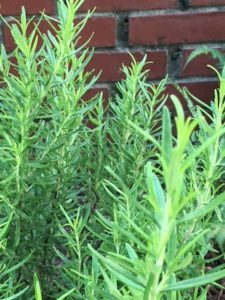 Rosemary is by far the biggest herb in my garden. Planted in the center of my front garden, it is huge and bushy and healthy. I’m so enamored with this evergreen shrub that I have planted several small ones along the front brick wall as an evergreen backdrop.
Rosemary is by far the biggest herb in my garden. Planted in the center of my front garden, it is huge and bushy and healthy. I’m so enamored with this evergreen shrub that I have planted several small ones along the front brick wall as an evergreen backdrop.
The smallest herb I grow is a tiny stand of creeping thyme and though the creeping varieties are not technically considered culinary thymes, I still use the small leaves for flavoring in soups and stews. Culinary thymes are upright small shrubs with bigger leaves and beautiful purple flowers. These are ultimately easier for cooking as it is much faster to pluck the larger leaves off the stems. All thymes are perennial and, like most herbs, need full sun and well drained soils.
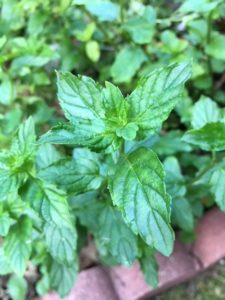
If you want to grow mint, be prepared to stand firm and not let it outgrow its welcome. There are dozens of different kinds of mint including chocolate, lemon, spear, pepper, apple, pineapple……the list seems endless. Mint is a notoriously aggressive plant and will overtake a garden bed in a season. I grow mine in a pot, which I put in the garden but move periodically so the roots won’t grow through the hole in the bottom of the pot and begin to spread from there. The divinely scented leaves are lovely and are useful for making teas or used as garnish.
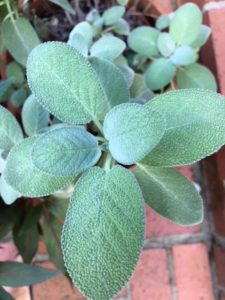
My sage, too, grows in a pot and has survived several seasons outdoors. I consider it one of my most useful herbs. Sage isn’t used in a wide variety of dishes but when a recipe calls for sage, there’s no substitute. Sage, or Salvia, is a genus that encompasses a huge diversity and I grow several different kinds. Some, such as the blue and purple, I grow for their gorgeous blossoms and their outstanding ability to attract pollinators.
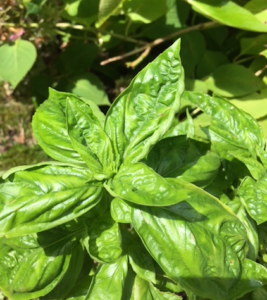
The abundance of rainfall this summer has helped my basil plants continue to grow and thrive. The heat has made many of the leaves look a little sunburned and dry around the edges but I keep it clipped back and the new growth is tender and sweet. Basil is an herb that you can store for winter use. Make pesto! Or, pour 1/2 cup good quality olive oil into a container and place as many basil leaves in it as possible. Keep in the refrigerator and use this infused oil in salad dressings or marinades. There are many different kinds of basils, including Holy, cinnamon, clove, lemon and even licorice!
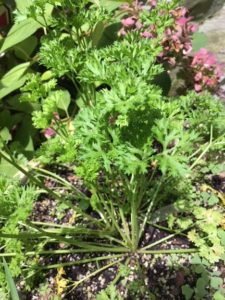
A pot of parsley, planted in fall, should survive our southern winters and provide months of fresh greens. Include it in planter boxes at the back door.
Well, I hope you think that I rose to the occasion. I’m going to hop to it and quit peppering your thoughts with more herbs to grow. Hope you’ve had a good thyme!
Laura

This was a dilly of an article — I enjoyed weeding it ☺